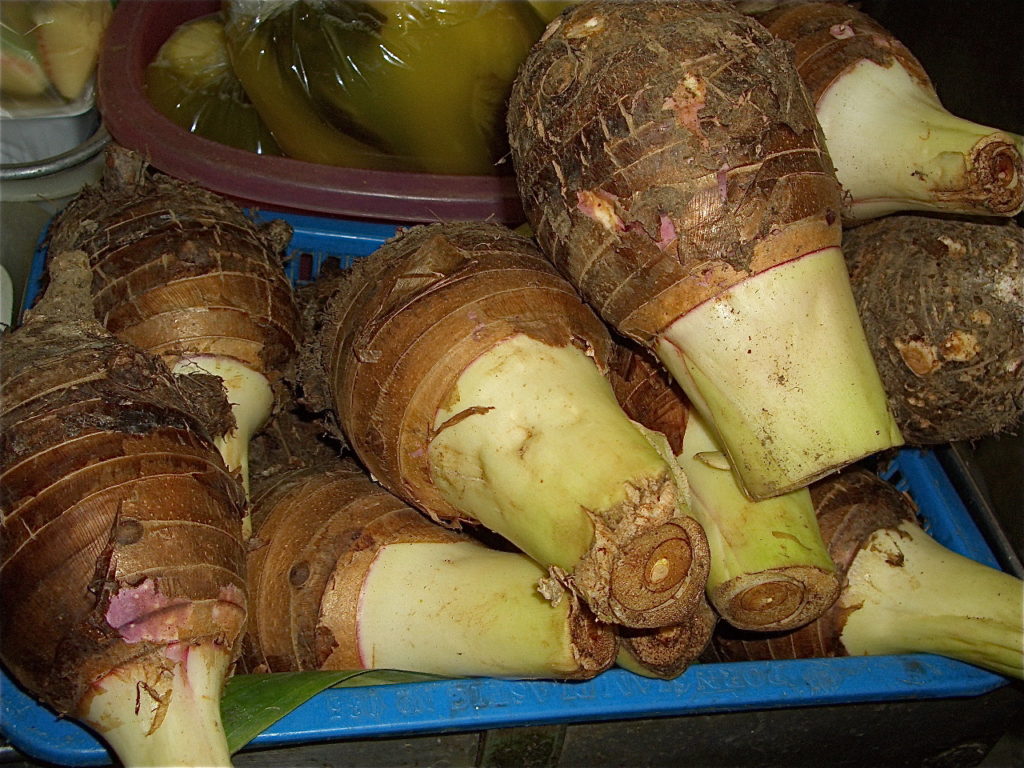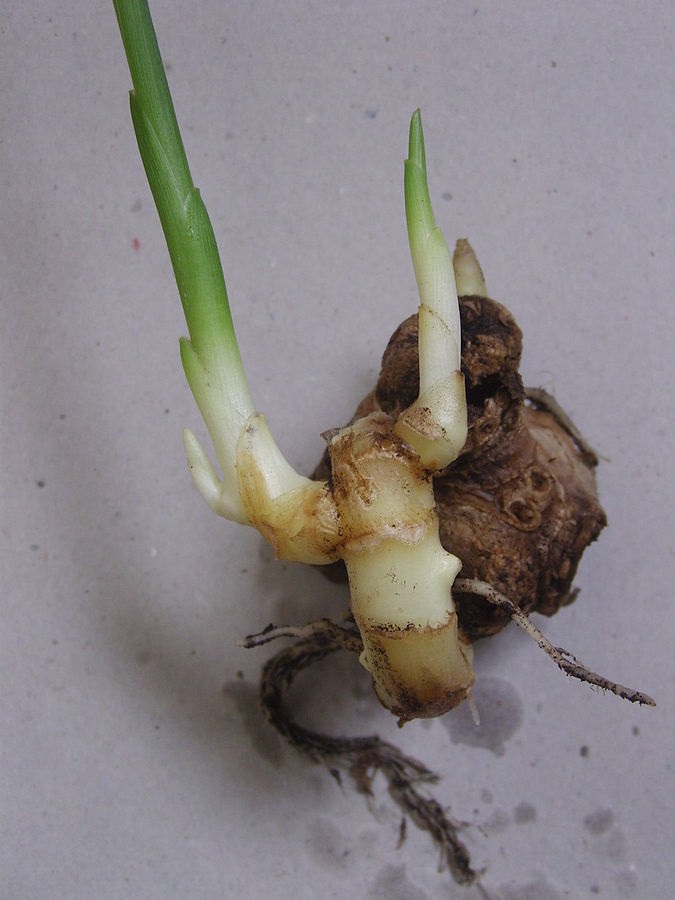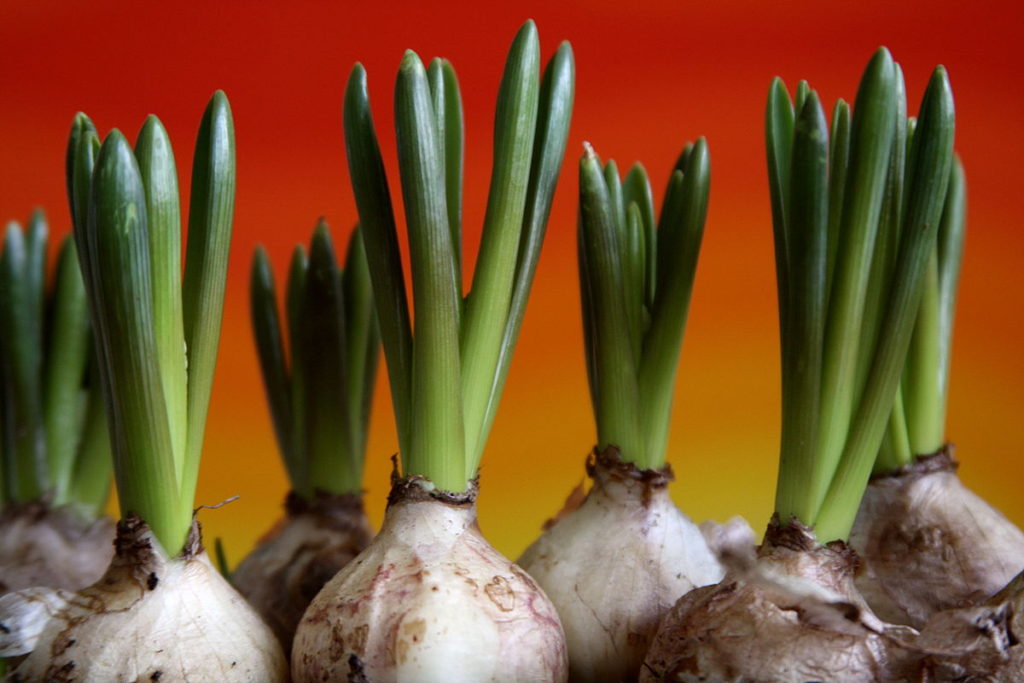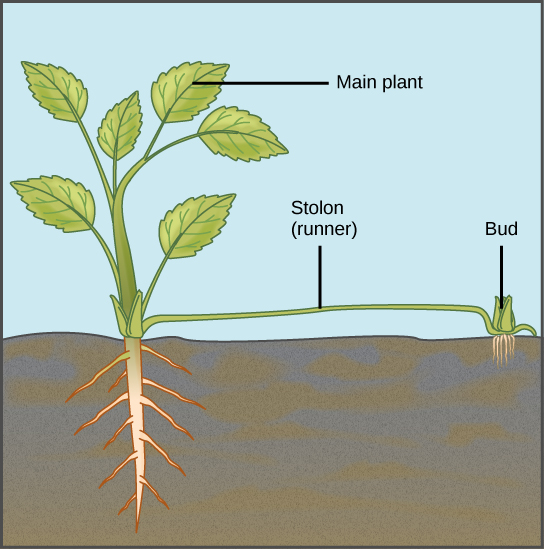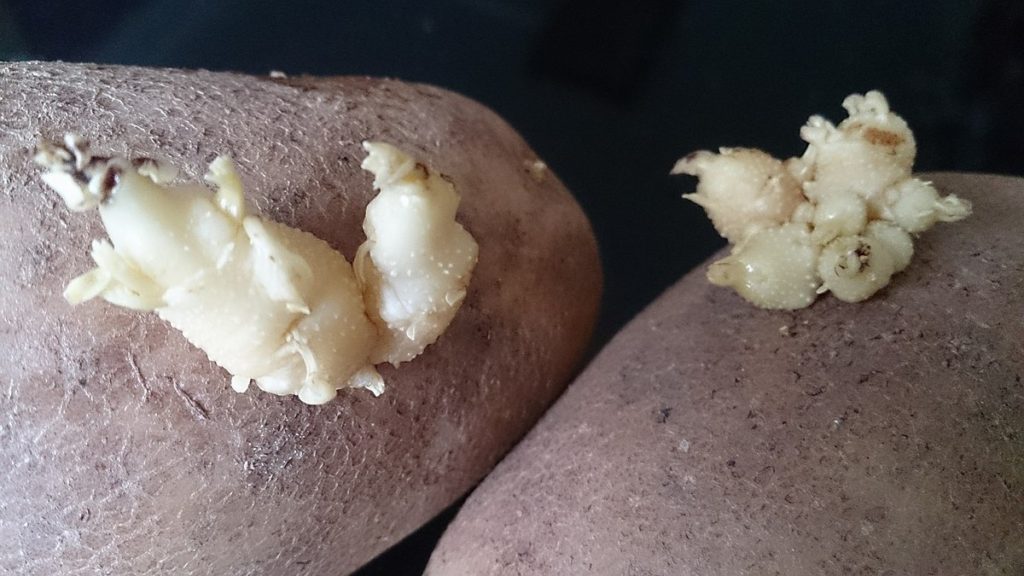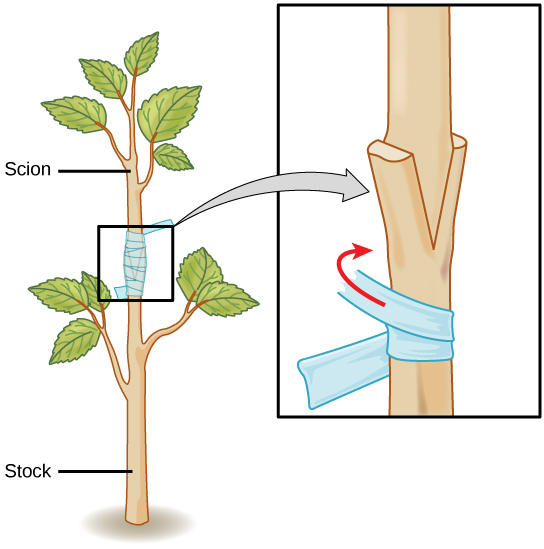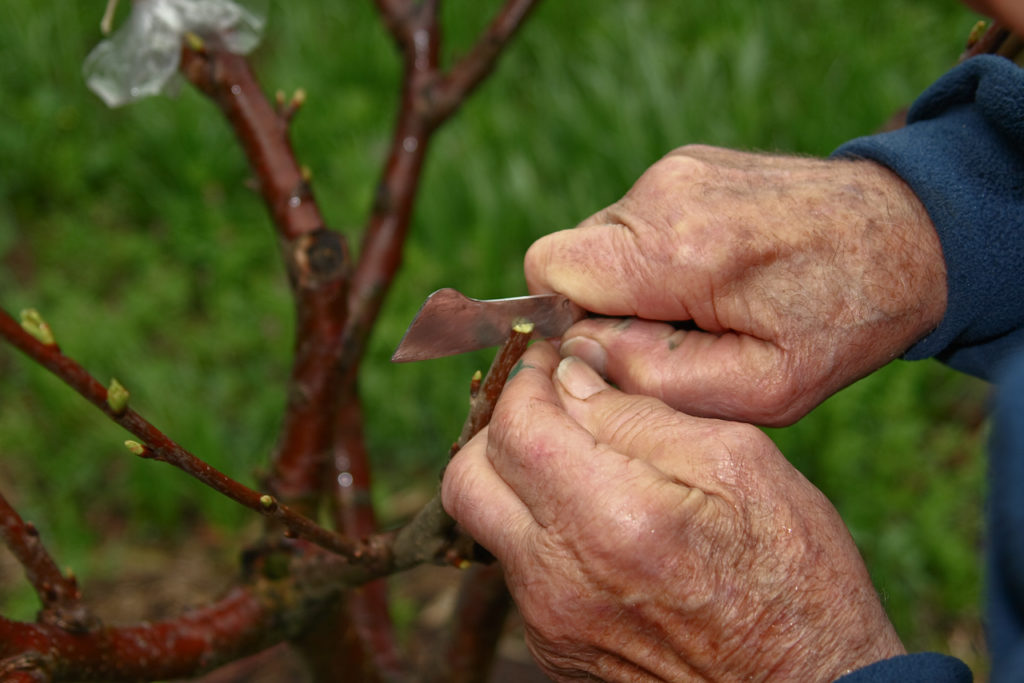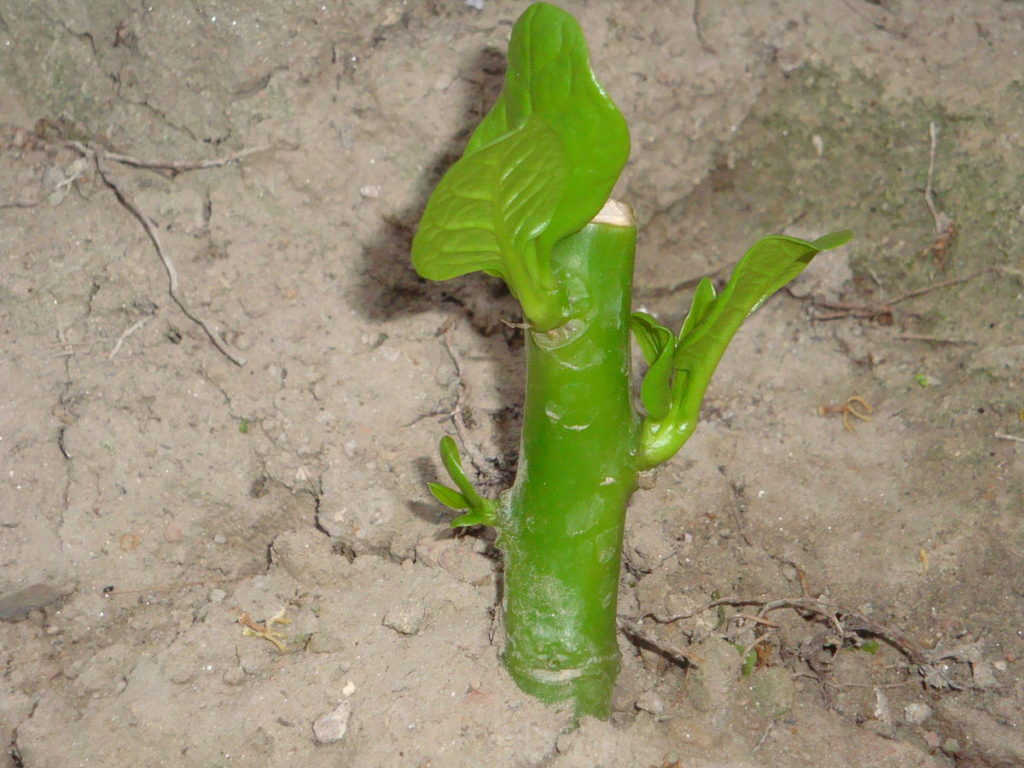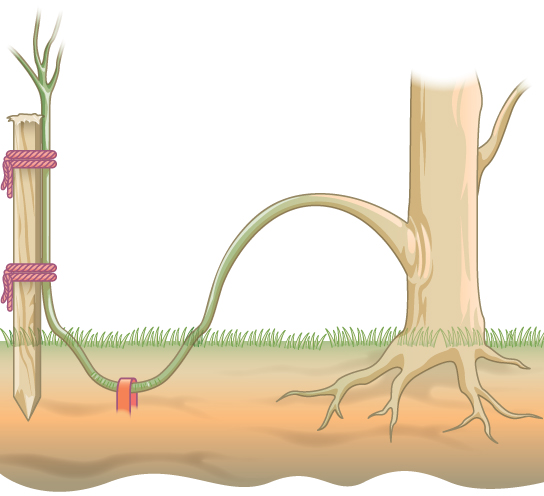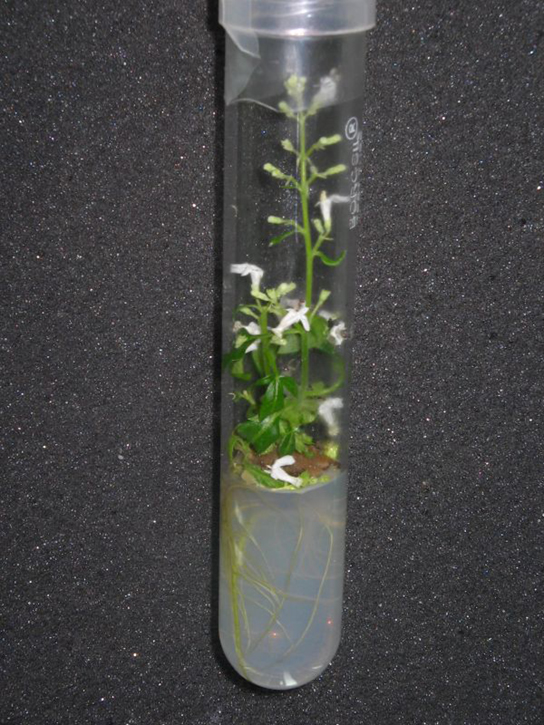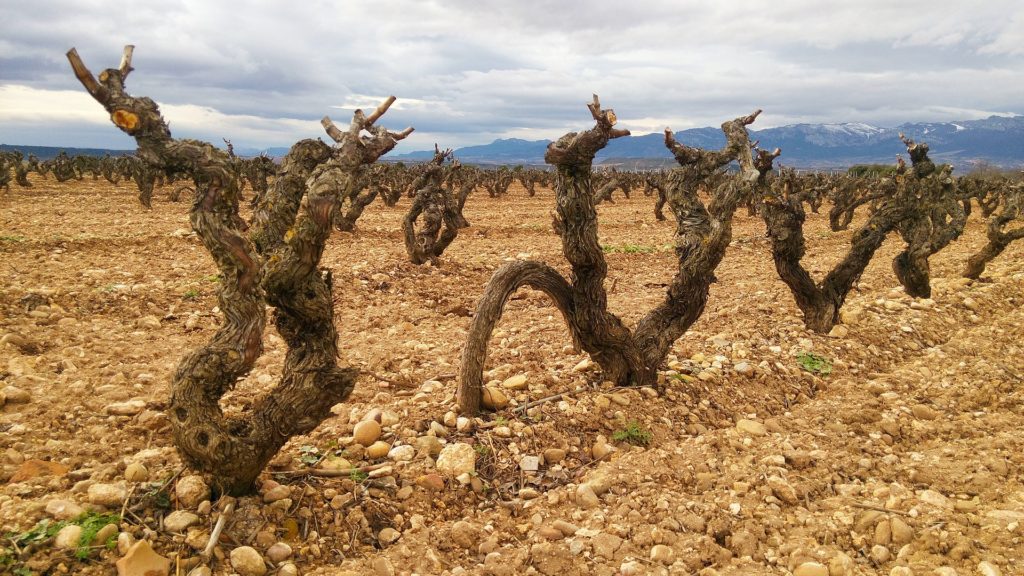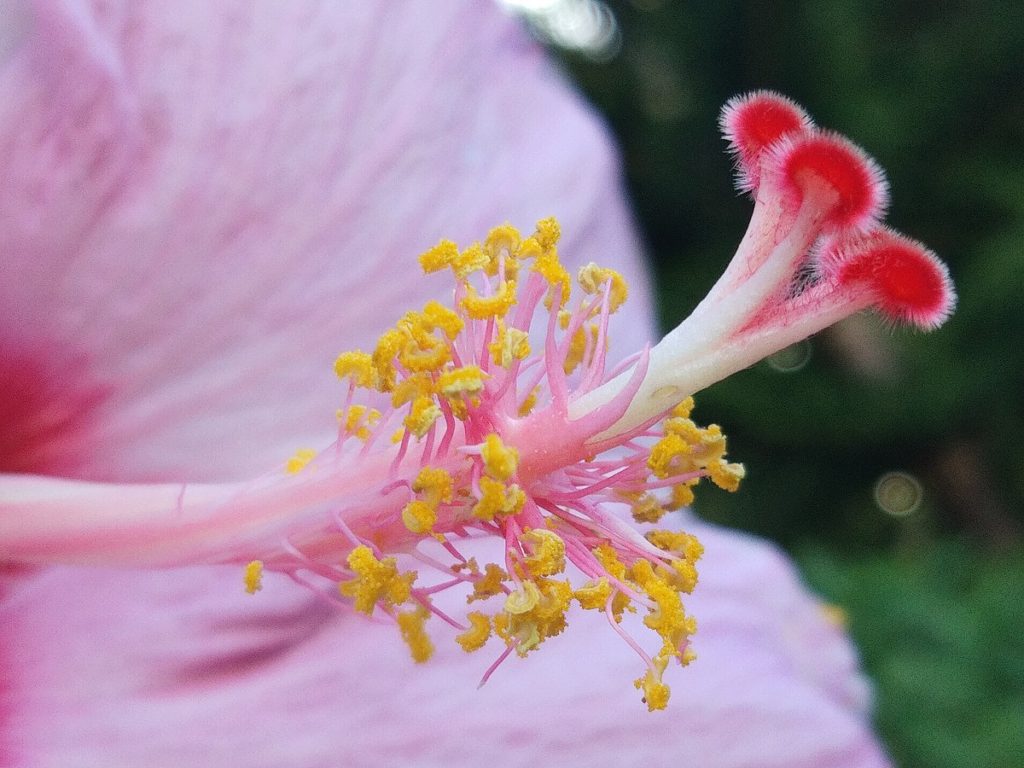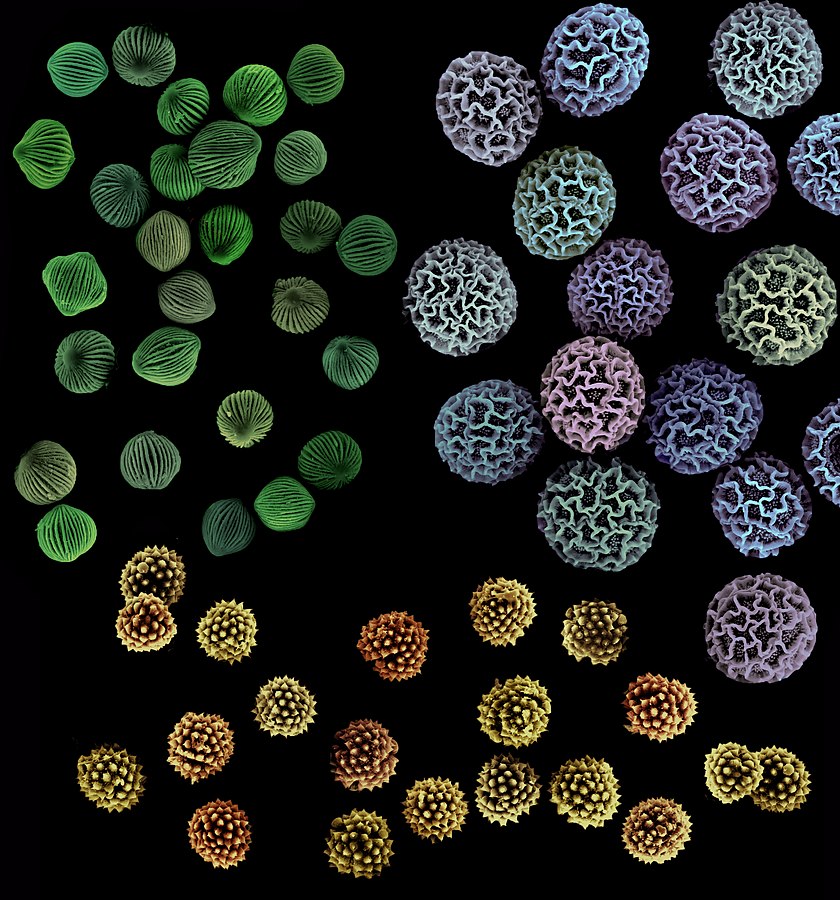Table of Contents
Inquiry Question
How does reproduction ensure the continuity of a species?
Content Descriptor
Explain the mechanisms of reproduction that ensure the continuity of a species, by analysing sexual and asexual methods of reproduction in a variety of organisms, including plants: asexual and sexual reproduction
Asexual reproduction in plants
Plants are multicellular organisms. Some plants can reproduce asexually. When plants reproduce asexually, no gametes are produced, and no fertilisation takes place. New plants (progeny) are produced by breaking off a small part of the parent plant. This is called fragmentation. The progeny are genetically identical to the parents. There are different types of asexual reproduction in the plant kingdom.
| Artificial reproductive structures | What is it? | Example |
|---|---|---|
| Corms | An underground stem that is generally tough and fibrous. Roots project from the base of the corm and shoots grow from the top of the structure. | Taro |
| Stem tubers | An enlarged underground stem that functions as a food storage structure. Tubers grow vertically and contain buds (e.g. the ‘eyes’ on a potato) from which new plants are generated. | Potato |
| Rhizomes | Rhizomes are also swollen underground stems that store food. New plants are formed from the buds on rhizomes. Unlike tubers, rhizomes grow horizontally. | Ginger |
| Stolon | Stolons are similar to tubers, except that they spread out from the parent plant through extended structures called runners. | Strawberry, potato |
| Bulbs | An underground structure of some plants that is usually fleshy. They contain roots on the underside. Bulbs often contain a thin outer covering called a tunic – these are dried out remnants of leaves that form a protective outer covering of the bulb (e.g. the outer covering of the onion). | Onion |
Artificial methods of asexual propagation of plants
Agriculture takes advantage of the asexual reproductive behaviours of plants. Since the progeny of asexually reproducing plants is genetically identical to the parents, this reproductive technique can produce large numbers of offspring with desirable biological traits. This is referred to as the artificial propagation of plants. Several techniques are used for artificial propagation, such as grafting, cutting, layering, and micropropagation.
| Technique | Description | Examples |
|---|---|---|
| Grafting | A part of the desired plant is joined with another plant so that they become one. | Grapes, Apples |
| Cutting | A piece of the desired plant is cut off and planted to produce a new organism. Such cuttings usually contain buds or nodes from which new plants germinate. | Rose, Chrysthanemum, Hydrangea |
| Layering | A technique that produces roots from stems. A young stem from a plant is bent so that it becomes partially buried. The buried portion of the stem will begin to grow roots, and eventually, a new clone of the parent plant is produced. | Climbing roses, Rhododendron, Azalea |
| Micropropagation | In micropropagation, new plants are grown in vitro (in culture under laboratory conditions). There are different methods of micropropagation, including callus, meristem and protoplast cultures. Usually, the plants are developed from cells or tissues of a parent plant on specific growth media. Hormones for growth and tissue specialisation may be added. Once germination has occurred, the plants are transferred to soil for normal growth. | Genetically modified plants, some horticultural plants |
Why asexual production in plants?
Asexual reproduction in plants produces progeny that are clones of their parents. There are several advantages and disadvantages to this method of reproduction.
Advantages
- The desirable biological traits are maintained in the plant populations (those traits may be lost in sexually reproducing populations). For farmers, agriculturalists and horticulturalists, this provides a consistent yield of plants with those desirable traits.
- Sexually reproducing plants usually produce seeds, which germinate into seedlings. Seedlings are delicate and take time to mature. Asexual reproduction by-passes this stage (i.e. the seedling stage). The young produced through asexual reproduction methods mature into their adult forms quickly. This is important commercially.
Disadvantages
One significant disadvantage of asexual reproduction is that there will be little genetic variation in such populations. Asexually-reproducing populations are well-adapted to the ‘normal’ conditions that they are used to. However, when conditions change, they may affect the population to the extent that it causes significant population declines. Changes in both abiotic factors (for example, water availability and soil and water pH) and biotic factors (for example, disease) affect asexually-reproducing populations more than sexually-reproducing ones. This is because of the low levels of genetic variation in vegetatively-propagated plant populations. One famous example of disease affecting a vegetatively-propagated crop is the Irish potato famine of 1845 – 1852. The pathogen was a fungus-like organism called Phytophthora infestans, which was thought to have been brought to Ireland from the Americas by ships. Since most of the potato crop in Ireland was propagated vegetatively, the disease quickly spread through the population, devastating potato plants. The resulting famine killed more than one million people (Ireland’s present-day population is less than that before the famine).
Germplasm
To address the disadvantages of vegetative propagation, scientists have developed germplasm. The germplasm is a genetic library of plant tissues (such as a leaf, a piece of stem, pollen or even a few cells). The germplasm is also used to store samples from sexually reproducing plants (for example, seeds). The tissues in the germplasm can be used to grow whole plants. Importantly, the germplasm contains the genetic information about the plant tissues stored in it – this is a valuable resource for conservation and producing new plant varieties. In Australia, several organisations, such as The Australian Network for Plant Conservation Incorporated, The Royal Botanic Garden Sydney, Australian Pastures Genebank and Center for Agricultural Research in the Dry Areas (Icarda) Germplasm Evaluation maintain germplasms for native, horticultural and crops.
Sexual reproduction in plants
Sexual reproduction in plants occurs through the production of gametes, which fertilise to produce an embryo. In flowering plants (called angiosperms), male gametes (sperm) are contained in a powdery substance called pollen, while female gametes (eggs) are called ovules. The process of transferring the pollen to the female parts of a plant is referred to as pollination.
Flowering plants
In angiosperms, the flower is the reproductive structure of the plant. In some plant species, the male and female structures are found in the same individual (such plants are called monoecious), while in others, there are separate male and female plants (dioecious).
Parts of a flower
The following figure shows the parts of a monoecious flower.
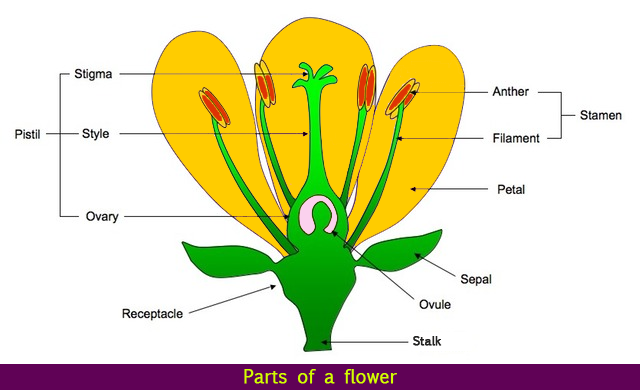
The male reproductive part of the flower is the stamen, consisting of the filament (stalk) and the anther. Pollen grains are stored in the anthers. The female reproductive part of the flower is the pistil, consisting of the stigma, style (stalk) and ovary. The ovules are stored in the ovary. Usually, each flower contains one female structure but many male structures. In dioecious plants, the male and female reproductive structures are in different individuals. Therefore, male plants bear flowers that produce pollen, while female plants bear flowers that produce ovules. Each pollen grain contains a haploid vegetative cell, which will divide to form sperm cells after successful pollination. The ovules contain haploid egg cells and polar nuclei, which are involved in fertilisation.
In some monoecious plants, pollination occurs between the male and female structures in the same flower – this is referred to as self-pollination. In other plants, pollination can only occur between flowers in different plants – this is cross-pollination. Cross-pollination increases the genetic diversity of the species, while self-pollination results in reduced genetic diversity.
Many humans are allergic to pollen grains and cause hayfever in affected persons. The treatment of symptoms includes the use of decongestants, anti-inflammatories and anti-histamines. In some cases, pollen can trigger asthma attacks. Bee pollen (honey containing bee pollen) is sometimes used as a dietary supplement.
Pollination
Plants have evolved various strategies for pollination. Wind, water, and animals are commonly used strategies. Pollen that is wind-pollinated is light and smooth. The filaments of the flowers tend to be extended, and the anthers contain large numbers of pollen. The flowers of such plants generally are small, not colourful, do not produce nectar or fragrances. Plants that rely on wind pollination occur in high densities to increase the chances of successful pollination.
Water-pollinated plants tend to be aquatic. The pollen is released into the water and is transported by water currents to receptive plants.
Animal-pollinated plants produce large, colourful flowers. They may also produce nectar and fragrances to attract pollinators. Also, animal-pollinated plants have evolved strategies such as visual cues, scent, food, mimicry, and entrapment to maximise pollination success. Such plants’ pollen grains may contain specialised structures such as barbs to attach to the outer coverings of animals (for example, hair, fur, exoskeleton).
The goal of pollination is to transfer the pollen grains to the stigma (part of the female reproductive structure) of flowers.
Fertilisation
After the pollen grains have landed on the stigma of the flowers, they will begin to germinate. Some plants are self-sterile – they cannot self-pollinate: if pollen grains from the same plant land on the stigma, those pollen grains will not germinate. Only pollen grains from other plants will be able to germinate after pollination (cross-pollination). During germination, the pollen grains produce a pollen tube, when travels down the style and into the ovary. The vegetative cells emerge from the pollen grains. In the pollen tube, each vegetative cell will divide mitotically to become two sperm cells. They move through the pollen tube towards the ovary. In the ovary are multiple ovules. Each ovule contains one haploid egg cell and two haploid polar nuclei. During fertilisation, one sperm cell fuses with the egg cell to form a diploid embryo. The other sperm cell fuses with the two polar nuclei to form the triploid endosperm. Eventually, these structures become the seed, while the remaining structures of the ovary become the fruit.
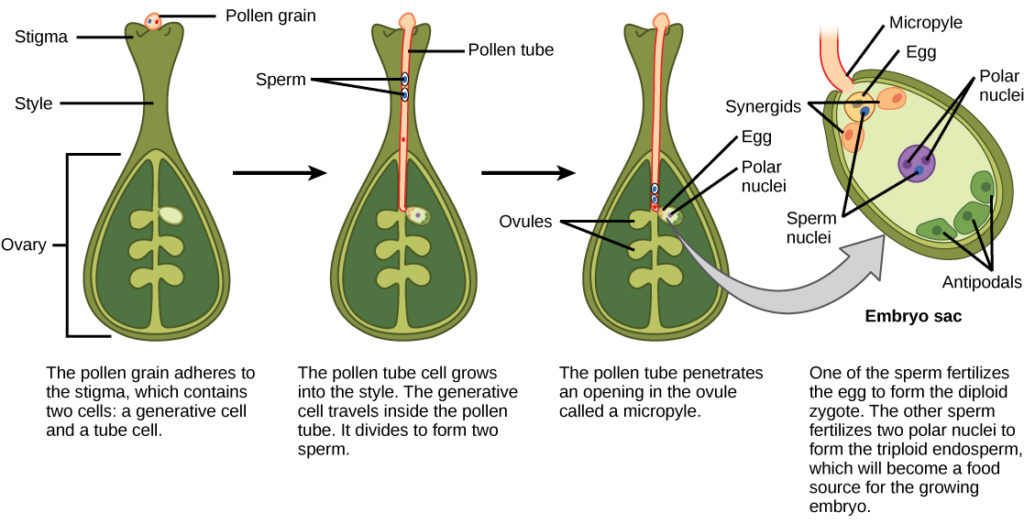
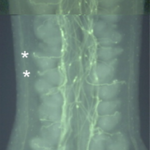
Reproduction in non-flowering plants
Non-flowering plants are also referred to as gymnosperms. Their sexual reproduction cycle is similar to that of the angiosperms (flowering plants). Gymnosperms, such as conifers, produce cones instead of flowers. The cones come in two varieties: male and female. Male cones produce the pollen, while the eggs are stored in female cones. During pollination, the pollen is transferred (usually by the wind) from male cones to female cones. Pollen tubes are formed to the ovules, where sperm and egg cells fertilise to give rise to embryos.
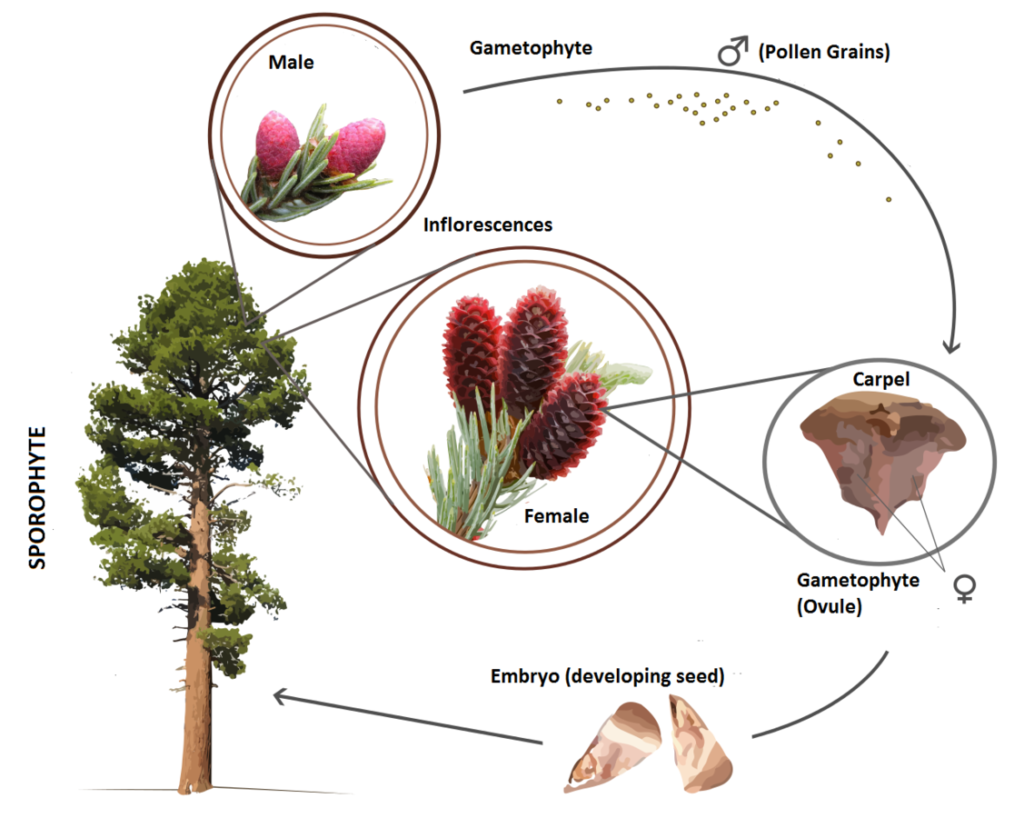
Summary
Both asexual and sexual reproductive strategies are evident amongst plants. Asexual reproduction produces progeny plants that are genetically identical to their parents. This property is useful in agriculture and horticulture, where large numbers of identical plants can be produced in a relatively short time. Sexual reproduction in plants involves the production of haploid gametes (sperm and egg cells). Since plants are non-motile, they have evolved several elaborate strategies to ensure gametes’ fertilisation: pollination. Sexual reproduction increases the plant populations’ genetic diversity, which is important for them to survive the threats imposed by changing environments and disease pressures.
